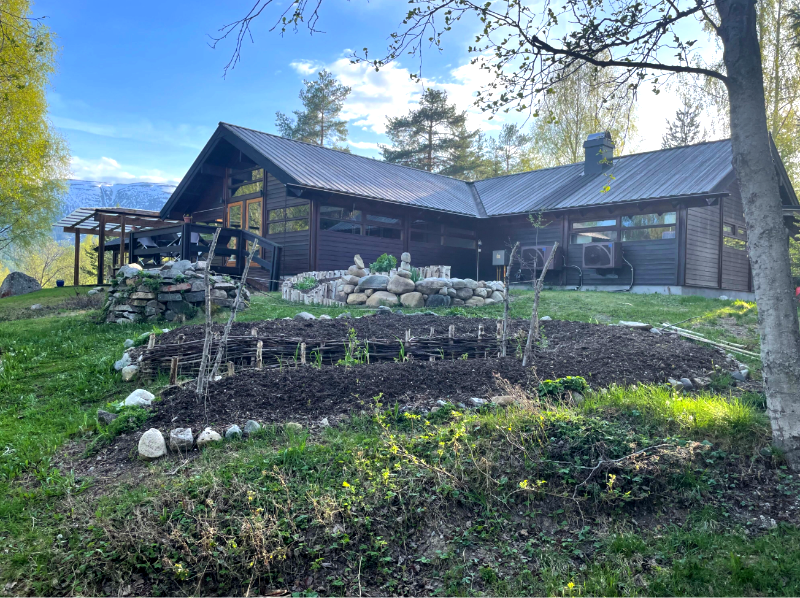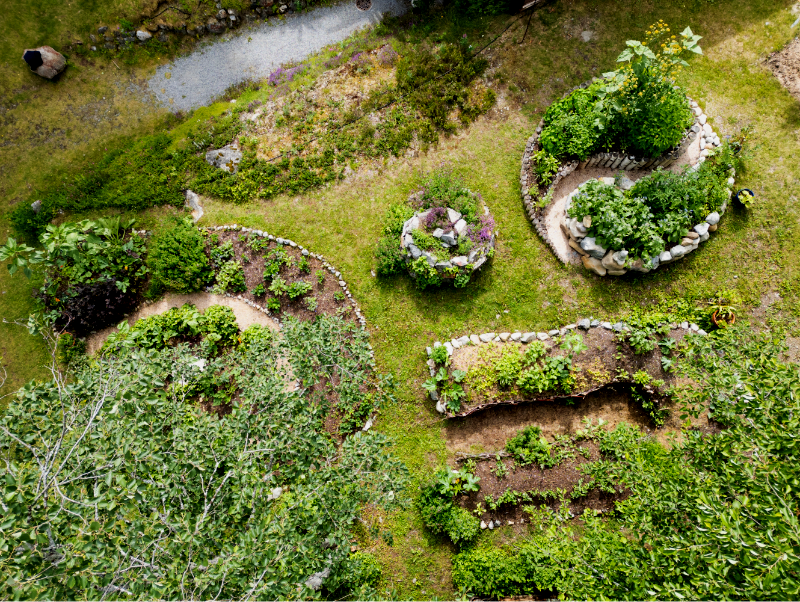Time to sow!

4 tips for healthier soil
Suddenly warm spring weather has melted all the snow at Dharma Mountain, and we are busy preparing, sowing, and planting in our garden. Dharma Mountain is a Permaculture hub, and in our kitchen garden, we have several beds following a permaculture principles called "hugelkulture". Here we grow a mixture of salads, zucchini, cucumber, kale, chard, pumpkin, peas and edible flowers and herbs.The location and light conditions have a lot to say about how well the plants thrive, as well as, of course, the soil quality. Here are four tips to create a better soil quality in your garden!

1. Feed the soil
The soil is alive, and like all living things, it needs nourishment. Now in the spring, it’s good to start by removing any weeds that inevitably come first and adding a layer of compost, ideally mixed with well rotted cow or horse manure, on top. When it rains, the nutrients will seep down. There are also many things you can give to the soil during the season, which serve as food:
• finely ground eggshells
• rotten tomatoes and zucchini
• golden water – urine mixed with water in a 1:10 ratio
• nettle water. Fill a bucket with nettles and water, and let it sit for 2-4 weeks until it starts to smell. You can mix in a 1:10 ratio with water and use as fertilizer.
2. Plant different plants in the same bed
At Dharma Mountain, we mix several plants in the same bed, for example, zucchini, kale and salad with calendula, violas and nasturtium. This good for many reasons, for example, the flowers attract pollinator insects, helping to pollinate the zucchini and cucumber, helping to increase the yield. Each plant has different nutritional requirements and also what they contribute to the soil health too. The salad crops like some shade that can be provided by the leaves of the zucchini for example and tomatoes love to grow with basil.
3. Cover the soil
In nature, the soil wants to be covered. Open soil soon gets a layer of weeds, these are the pioneer plants and often medicinal for us and the soil. This acts as protection against drying out and losing nutrients and provides better living conditions for important micro organisms. Therefore, you should cover the soil after sowing. Use what you have, it can be leaves, grass clippings, sheep wool, hay, 2 year old composted sawdust, or wood chips. The layer should be thick enough to not see the soil beneath. This mulch really helps to keep the water in the soil too and will help to decrease the amount of water the bed requires through the growing season.
4. Take care of the soil
The soil needs to be watered, and nourished the whole season. Treat it like a living being! Adding home made compost or garden gold as we call it, back to the earth completes natures cycle. At the end of the growing season, we leave plants in situ to die back and release their nutrients back to the soil. It also provides shelter for small animals to over winter in the harsh weather.

What is permaculture?
Permaculture is a holistic planning system working with natures principles. The ethics of Permaculture are to create stable productive ecosystems that take care of people, the planet and with fair share, while working in harmony with nature. There are 12 beautiful principles that are guides to help us achieve this. In permaculture, we look at the whole where we are and seek to do the same as nature does.
Join us for an inspiring long weekend:
Spiritual Activism – Engaging in the world with inner balance • 3. – 6. October, 2024
Jonathan Weber & Jen McConachie. Read more
